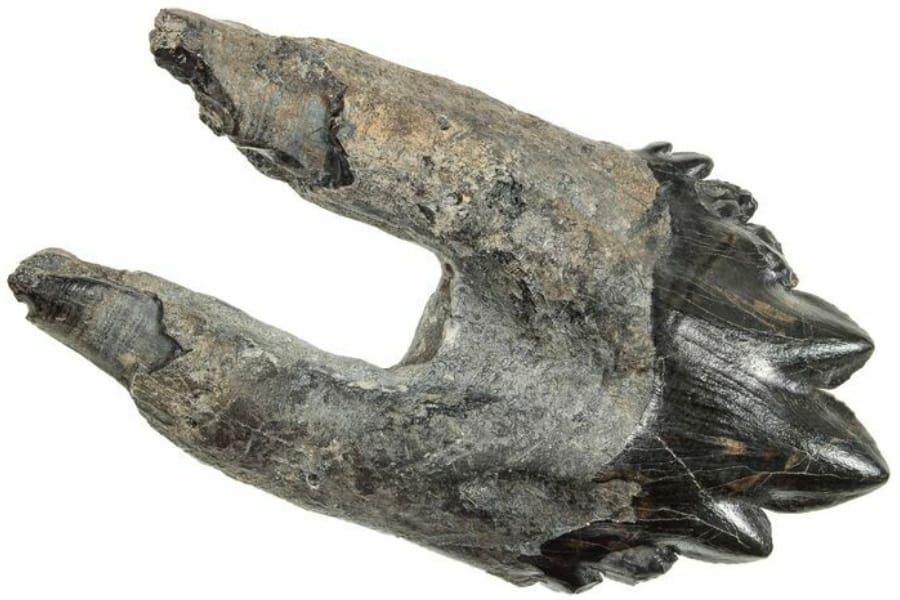Holding a fossil is like having a piece of history in your hands. That’s why fossil hunting is such an exhilarating adventure, but it’s not always easy, especially in a place like our state.
Without the proper guidance, finding fossils in Alabama can be quite challenging. Fossils are often hidden deep underground, and you will need knowledge and tools to unearth them successfully.
And that’s where we can help! We’ll share with you the different verified locations to find Alabama fossils, such as the Bangor Limestone, Minkin Footprint Site, Moscow Landing, Alabama River, and Weiss Lake.
We’ll also talk about the different types of rare and common fossils in Alabama. Knowing what to look for and where to find it can make your fossil-hunting experience in our state truly rewarding. Let’s get started!
The Fossils Of Alabama You Can Find
We are lucky to have plenty of great rockhounding sites in Alabama, but not all of them have fossils, too. There are specific areas where these ancient wonders hide.
But before we focus our discussion on that, let’s briefly go through the types of fossils you might encounter here:
- The extensive local experience and understanding of our team
- Input from multiple local fossil hunters and fossil groups
- The accessibility of the various locations
- Safety and potential hazards when collecting
- Private and public locations
- A desire to include locations for both experienced fossil lovers and those who are just starting out
Using these weights we think we’ve put together the best list out there for those who love finding great new fossils for our collections!
Common Alabama Fossils
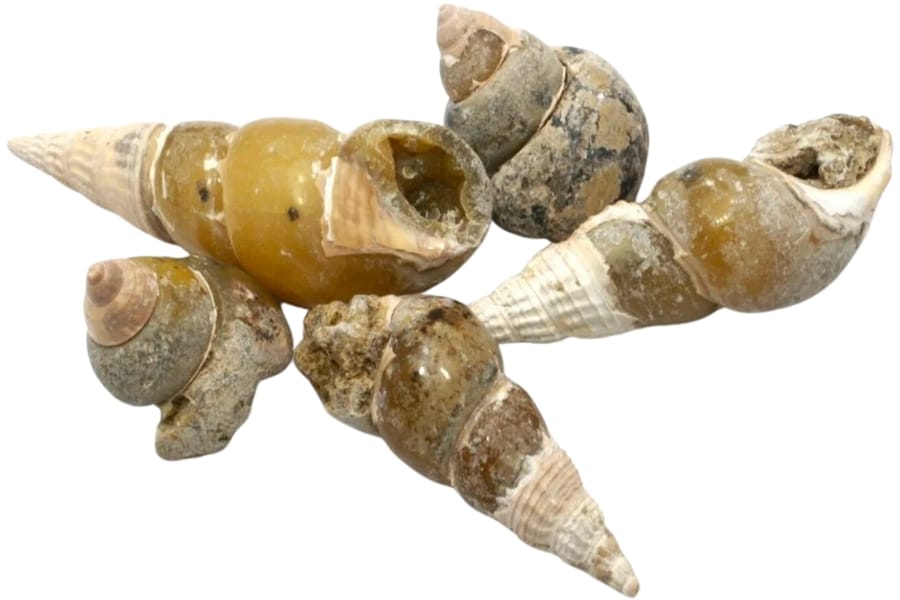
During your fossil hunting here, you have a big chance of finding the following common Alabama fossils:
- Echinoids
- Brachiopods
- Shark teeth
- Trilobite
- Gastropods
Alabama State Fossil – Basilosaurus cetoides
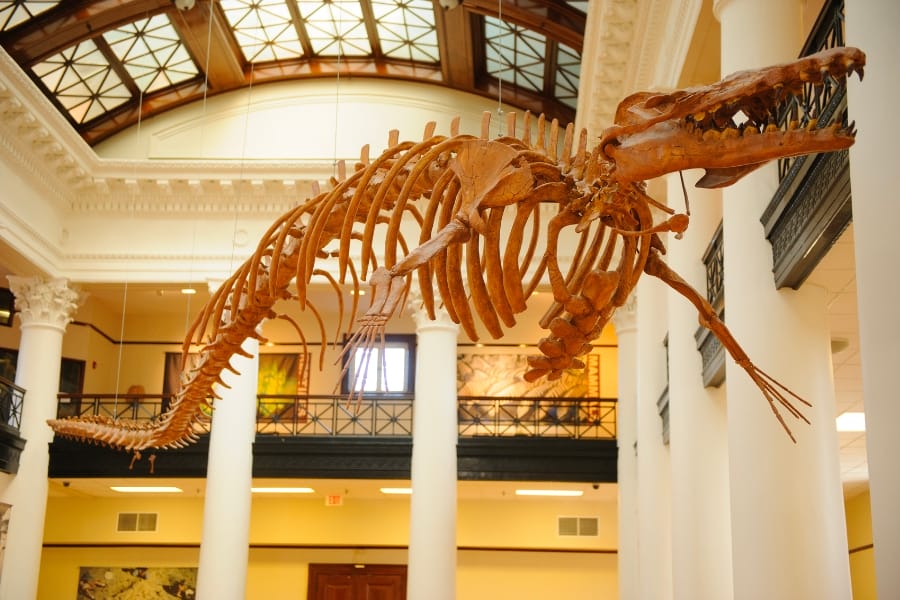
The Basilosaurus cetoidesis a truly remarkable creature from the ancient seas. Despite its name, it’s not a true dinosaur, but a prehistoric marine mammal that lived around 40 to 34 million years ago during the Eocene epoch.
It could grow to an astonishing length of over 60 feet, making it one of the largest predators of its time. It had a serpentine body, long jaws filled with sharp teeth, and flippers that resembled fins. Its name, Basilosaurus, means “king lizard,” which can be a bit misleading, as it’s not a lizard at all.
Basilosaurus cetoides is an early ancestor of modern whales, providing critical insights into the transition of land-dwelling mammals to the sea. It still possessed tiny, non-functional hind limbs, a vestige from its terrestrial ancestors.
This unique trait helps scientists understand the evolutionary journey of whales, which ultimately led to the magnificent marine mammals we see today.
Rare Alabama Fossils
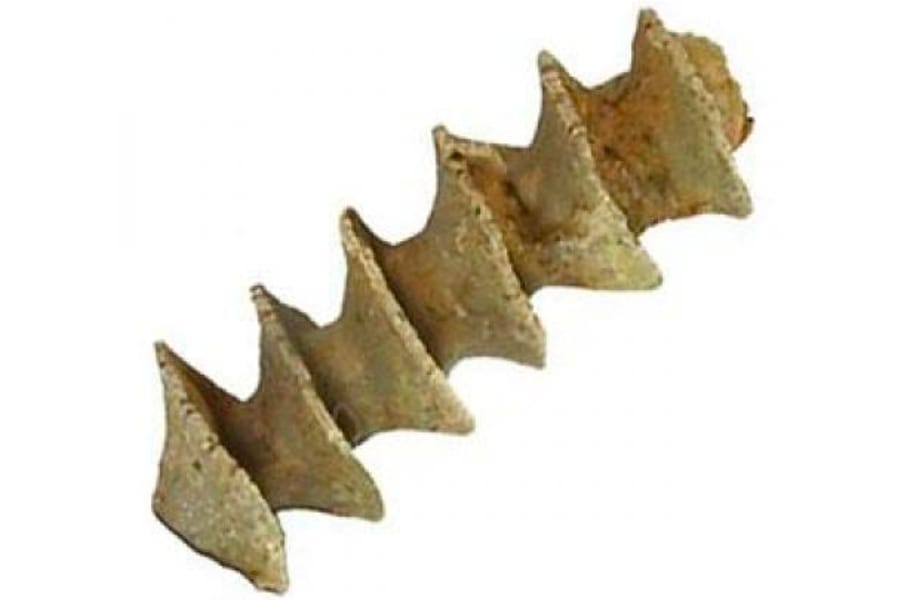
Aside from common finds, you also have a chance to find rare Alabama fossils if you search for them in the right places. Some of these rare finds are:
- Pentremite
- Archimedes
- Nanopus reidiae
- Racemiguembelina
- Morozovella
The Best Places To Find Fossils In Alabama
While there are many verified locations to find fossils in Alabama, we’ve selected our top 5 recommendations best on the variety and uniqueness of the fossils you’ll find in each of them.
Always Confirm Access and Collection Rules!
Before heading out to any of the locations on our list you need to confirm access requirements and collection rules for both public and private locations directly with the location. We haven’t personally verified every location and the access requirements and collection rules often change without notice.
Many of the locations we mention will not allow collecting but are still great places for those who love to find beautiful rocks and minerals in the wild without keeping them. We also can’t guarantee you will find anything in these locations since they are constantly changing.
Always get updated information directly from the source ahead of time to ensure responsible rockhounding. If you want even more current options it’s always a good idea to contact local rock and mineral clubs and groups
Bangor Limestone
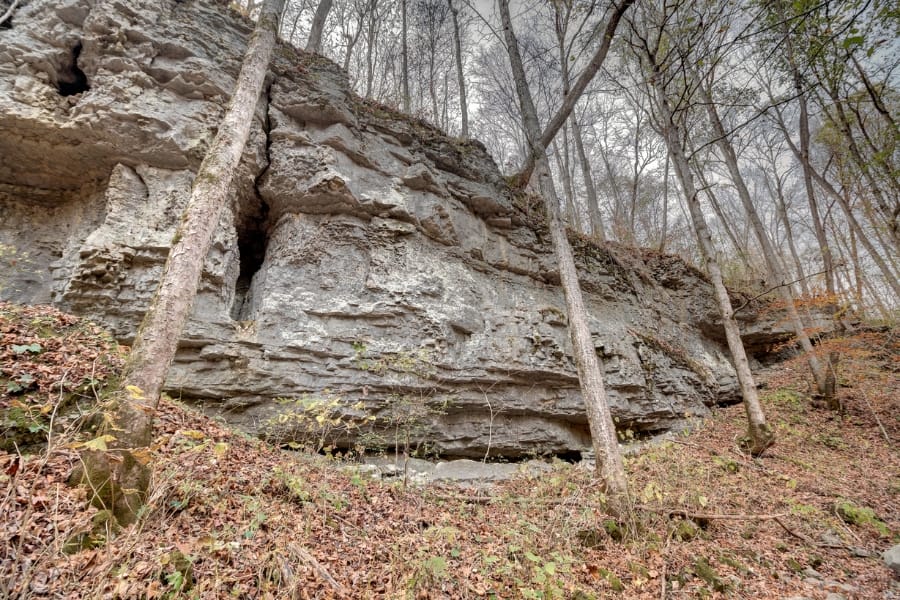
Located in the northern part of our state, Bangor Limestone spans several counties, including Madison, Jackson, and DeKalb. What makes it so great for finding fossils is its rich history as a sea deposit from the Late Mississippian period, which occurred around 320 million years ago.
This limestone formation is primarily composed of fossilized marine organisms, such as crinoids, brachiopods, and corals. The fossils here are exceptionally well-preserved, and you can often find intricate details of these ancient creatures imprinted in the rock.
The Bangor Limestone’s layers have been eroded by natural forces like rain and wind, making it relatively easy for fossil enthusiasts to access and explore.
So if you want to go here, it will be a straightforward process, as it’s conveniently located near major highways and roads, including US-72 and AL-65. You’ll find various roadcuts, stream banks, and outcrops here where fossils can be spotted.
Where and what fossils to find in Bangor Limestone
Among the rare Alabama fossils that you can find here are the Pentremites and Archimedes. You can also come across brachiopods, bryozoans, crinoids, gastropods, horn corals, and occasional shark teeth or trilobite fragments.
DON'T MISS OUT ON ANY GREAT FINDS!
While you're out searching for Fossils you're going to find A LOT of other interesting rocks and minerals along the way. The last thing you want to do is toss out something really interesting or valuable. It can be easy to misidentify things without a little guidance.
We've put together a fantastic field guide that makes identifying 140 of the most interesting and valuable rocks and minerals you will find REALLY EASY. It's simple to use, really durable, and will allow you to identify just about any rock and mineral you come across. Make sure you bring it along on your hunt!
Stephen C. Minkin Paleozoic Footprint Site (Formerly Union Chapel Mine)
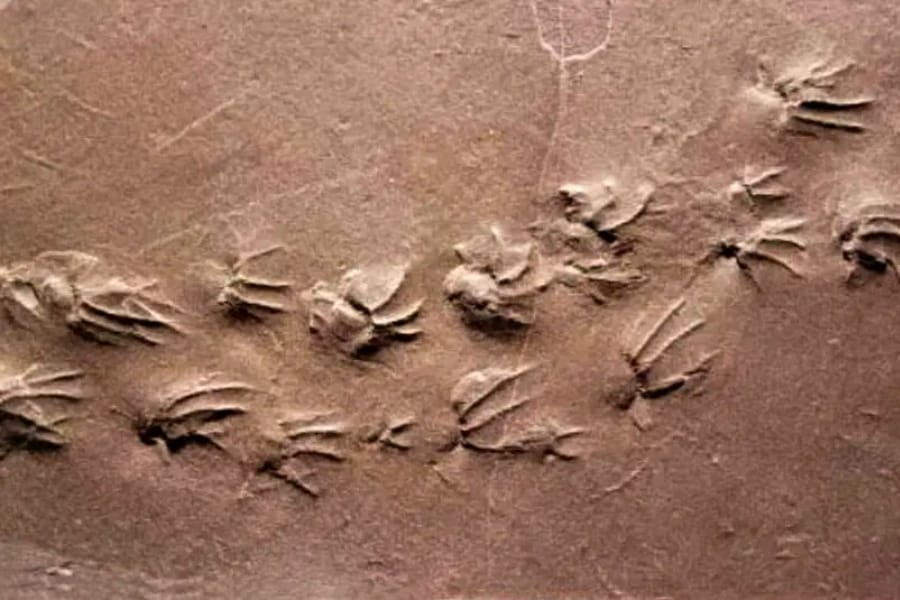
Stephen C. Minkin Paleozoic Footprint Site is situated in the Appalachian Plateaus region of Alabama, specifically in the city of Jasper.
It has a remarkable abundance of Paleozoic-era footprints that have been preserved in the rocks, dating back approximately 310 million years.
These well-preserved footprints were left behind by a variety of animals that lived during the Late Mississippian period. You can spot tracks of ancient amphibians, reptiles, and even early ancestors of mammals.
Another outstanding feature of this site is its accessibility. It’s easily reached by car from major cities like Birmingham. The site itself is situated within a public park, making it an excellent destination for both seasoned fossil hunters and newcomers.
Where and what fossils to find at the Stephen C. Minkin Paleozoic Footprint Site
In this site, there are trace fossils of at least 15 species of vertebrate and invertebrate species. It also has plant fossils, such as seed ferns, giant horsetails, and treelike cycads.
But the most astounding of them all are the tracks of Nanopus reidiae, a primitive 6-foot-long reptile that looks like a salamander. It’s believed to be the largest terrestrial animal alive at the time.
Moscow Landing
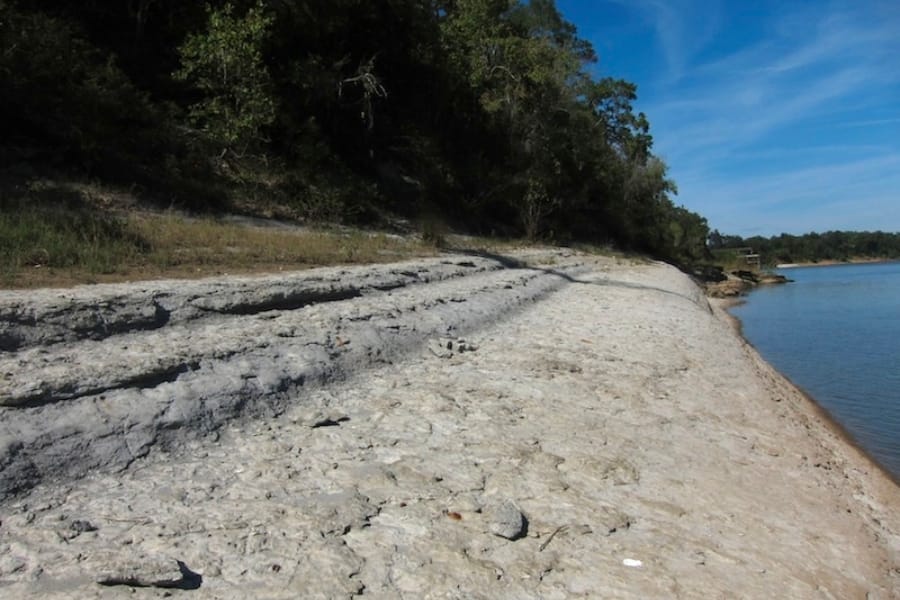
Nestled along the banks of the Tennessee River in Colbert County, Moscow Landing is a prime location for fossil hunting because of its unique geology and accessibility.
The geological formations here are primarily composed of sedimentary rocks from the Paleocene epoch, dating back around 58 million years. These rocks have preserved a wide range of fossils.
It’s particularly famous for its exposure of the Moscow Formation, which is rich in fossiliferous layers.
If you’re planning on visiting, your trip will be a breeze, as it’s located not far from the city of Tuscumbia. Accessible by road, this site is within a reasonable driving distance from major cities like Huntsville and Birmingham.
Where and what fossils to find in Moscow Landing
You can find fossils of Racemiguembelina and Morozovella, which both belong to the foraminifera class of unicellular marine microorganisms that develop pinhead-sized calcareous shells.
Alabama River
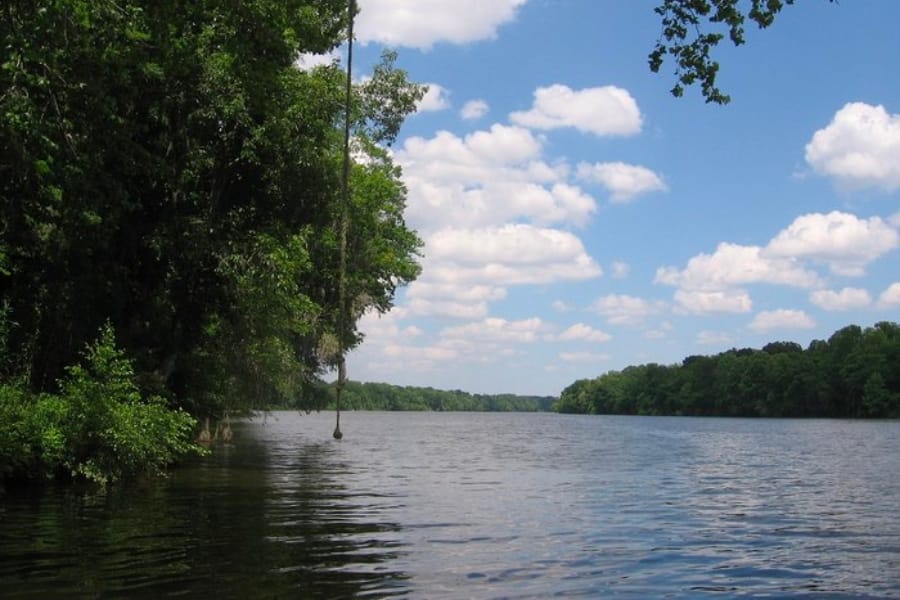
Winding its way through the heart of our state, the Alabama River offers an incredible opportunity to unearth a wide array of ancient fossils.
The geological formations along this river date back to various periods. You can discover fossils from the Cretaceous period and Eocene epoch, among others.
With a little patience and a sharp eye, you can uncover these hidden treasures in the river’s sedimentary rock layers.
Since the Alabama River flows through multiple cities and towns, including Montgomery, Selma, and Camden, getting here is a breeze. This accessibility makes it an ideal destination for fossil hunting, whether you’re a resident or visiting from afar.
Where and what fossils to find in the Alabama River
When you explore here, you’ll find brachiopods, mollusks, Inoceramus, Leidon bones sharks teeth, fine shells, large gastropods like Pseudoliva and Anchura, and pelecypods such as Bulbifusus, Pholas, and Martesia.
Weiss Lake

Weiss Lake is not just a breathtaking natural beauty— it’s also a wonderful place to explore for fossils due to its accessibility and the intriguing geological formations that can be found along its shores.
Surrounding this lake are sedimentary rocks from the Paleozoic era, which spans from around 541 million to 252 million years ago.
These rocks are known to contain a wide variety of fossils, including ancient marine life like brachiopods, trilobites, and gastropods. You might also stumble upon the fossilized remains of ancient corals and crinoids, which inhabited the seas that once covered this region.
Getting here is quite convenient, as it’s located near the towns of Centre and Cedar Bluff and is easily accessible by car. You can plan a day trip or even an extended stay to fully immerse yourself in its fossil-rich landscape.
Where and what fossils to find in the Weiss Lake
You can find various types of marine fossils if you explore the road cuts on the side of the road away from Weiss Lake.
Other Top Places To Find Alabama Fossils By Region
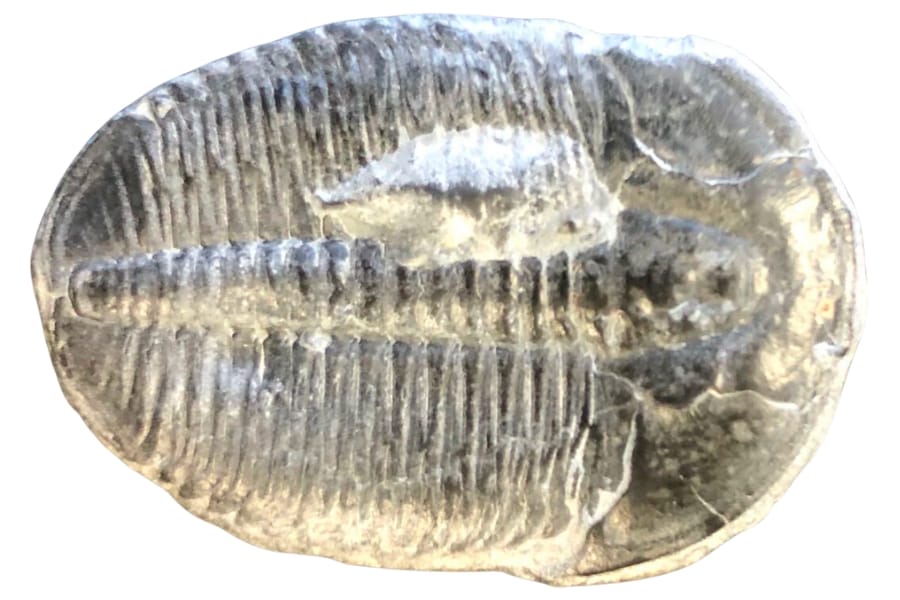
As we said above, Alabama has plenty of verified locations to find fossils, so aside from our top recommendations, below are other places you can explore here:
| Location | Fossils |
| Below Eufaula in Alexanders Landing, Barbour County | Mollusks, Crab claws, Fish teeth |
| Right bank of Chattahoochee River in Barbour County | Echinoderms, Hemiaster, Coptosoma, Mollusks, Crab fragments |
| Roanoke Bluff in Barbour County | Crassalites |
| West of Montevallo in Bibb County | Dorypyge, Zacanthoides, Amecephalus, Dolichometopus |
| Along Mahan Creek in Bibb County | Cryptozoon |
| Chickamauga Limestone in Blount County | Hebertella, Rafinesquina |
| Central of Georgia railroad cut in Bullock County | Ostrea |
| Colvin Mountain in Calhoun County | Anoplotheca, Rhynchotrema |
| In massive quartzite in Sulphur Springs, Calhoun County | Crinoid stems |
| Area exposures of Cambrian Conasauga Limestone in Cherokee County | Dicellomus, Trilobites, Crepicephalus, Norwoodia, Olenoides, Pseudagnostus, Tricrepicephalus |
| Outcrops along the river in Cedar Bluff, Cherokee County | Agnostids, Tricrepicephalus |
| Devonian Jemison chert in Jemison, Chilton County | Meristella, Favosites, Spirifer, Delthyris, Strophomenoids, Orthoceras |
| Copper Ridge Dolomite in Choctaw County | Cryptozoon, Melanopsis |
| On a hill above Souwilpa Creek in Choctaw County | Ostrea |
| White Limestone on hillsides in Clarke County | Claiborne fossils, Zeuglodon bones |
| Along Little Stave Creek in Clarke County | Eocene invertebrates |
| Town at the base of Talladega Mountain in Clay County | Lepidodendron in slates and lenses |
| West at Keller Quarry in Colbert County | Blastoids, Mesoblatus |
| Below Point-A dam on Conecuh River in Covington County | Shark teeth, Fish teeth, Snake vertebra |
| Bridge over Snake Creek on Carlowville-Snow Hill Road in Dallas County | Ostrea |
| At Red Mountain in Birmingham, DeKalb County | Cryptolithus |
| Around the head of Greasy Cove in Etowah County | Brachiopods, Graptolites |
| Along Allen Factory Road Fossiliferous limestones in Franklin County | Crinoid stems, Pentremites, Zaphrentis, Brachiopods |
| Downstream of Dead River in Geneva County | Pecten, Scutella, Ostrea, Nummulites, Scalpellum |
| Trussels Creek in Greene County | Birds, Archaeolamna, Scapanorhynchus |
| Erie Bluff in Warrior River, Hale County | Ostrea |
| Along Benges Creek in Stevenson, Jackson County | Crinoids, Brachiopods, Corals, Pentremites |
| Cedar Mountain in Chickamauga Limestone, Jefferson County | Isochilina |
| Cambrian Upper Copper Ridge Dolomite in Jefferson County | Trilobites, Gastropods, Scenella, Quebecoceras |
| Mount Tabor School in Lauderdale County | Spirifer, Trilobites |
| Goodlight Pool Quarry in Lawrence County | Broad faunas, Pentremites |
| Carboniferous rocks in Athens, Limestone County | Crinoid stems |
| Plymouth Bluff in Lowndes County | Mollusks Hamulus |
| Road cut along US431 on the west side of Mt. Sano in Madison County | Campophyllum, Chonetes, Pentremites, Agassizocrinus, Talarocrinus |
| Woods Bluff Group in Turnbull, Monroe County | Turritella |
| At the junction of US431 and AL651 in Russell County | Occasional shark teeth |
| Bowles Spring Church in Shelby County | Lecanospira casts |
| Pelham on Buck Creek in Shelby County | Turritella, Hormotoma, Coelocaulus, Orospira, Tarphyceras |
| Blount and Chandler Mountains along Dry Creek in St. Clair County | Lithostrotion |
| Epes Road in Livingston, Sumter County | Anomia |
| Government Quarry in Tuscaloosa County | Calamites |
| Bear Creek in Wilcox County | Haimesiastraea |
Common Questions About Fossil Hunting In Alabama
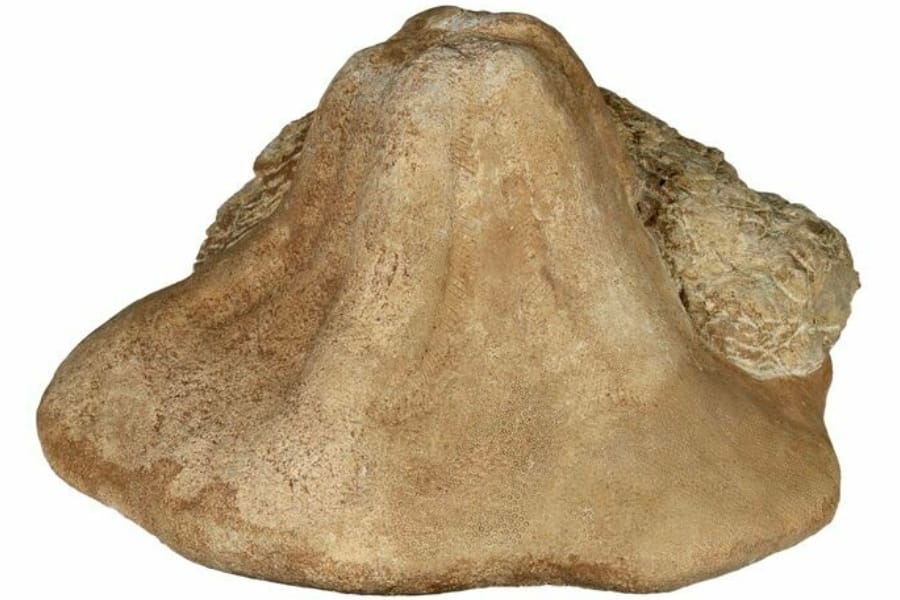
Before you pack your bags and head out here, we’ll answer some questions about fossil hunting in Alabama that have intrigued those who came looking for these ancient treasures before you:
Can you find megalodon teeth or shark teeth in Alabama?
Your chances of stumbling upon megalodon teeth in Alabama are unlikely. While our Gulf Coast does offer opportunities to find various types of shark teeth, megalodon teeth are exceptionally rare in this region for a reason.
Megalodon primarily inhabited oceans and seas that were much deeper than the shallow waters along Alabama’s coastline. As a result, the odds of it being preserved here are considerably low.
If you’re interested in shark teeth hunting in Alabama, there are still opportunities to discover teeth from other shark species, such as bull sharks, tiger sharks, and sand tiger sharks.
Is it illegal to collect fossils in Alabama?
Collecting fossils in Alabama for personal, non-commercial purposes is generally not illegal. There are legal restrictions in place, though, to protect certain resources and environments, so it’s illegal to collect from archaeological sites or areas with significant cultural or historical importance.
Fossil collecting on private lands is typically allowed with the landowner’s permission, and it’s important to obtain explicit consent to avoid any legal issues. Public lands may also permit fossil collecting, but it’s essential to check with the specific park or agency for any rules or restrictions that may apply.
While collecting fossils for personal use is often permissible, you should always recheck the regulations in the specific area you’ll explore. For more information, visit the official website of the Alabama Department of Conservation and Natural Resources (ADCNR).
Can you find dinosaur bones in Alabama?
Yes, it’s possible to find dinosaur bones in Alabama, particularly from non-flying dinosaurs.
Over the years, some discoveries have shed light on our state’s prehistoric past, uncovering representatives of several dinosaur groups. These include fossils of hadrosaurs, ankylosaurs, ornithomimids, dromaeosaurs, and tyrannosaurs.
It’s important to note that the number of dinosaur specimens found in Alabama may not rival famous dinosaur-rich areas like the western United States. However, these discoveries are significant in expanding our understanding of dinosaur distribution and behavior during the Mesozoic Era.
Our Favorite Places To Buy Fossils In Alabama
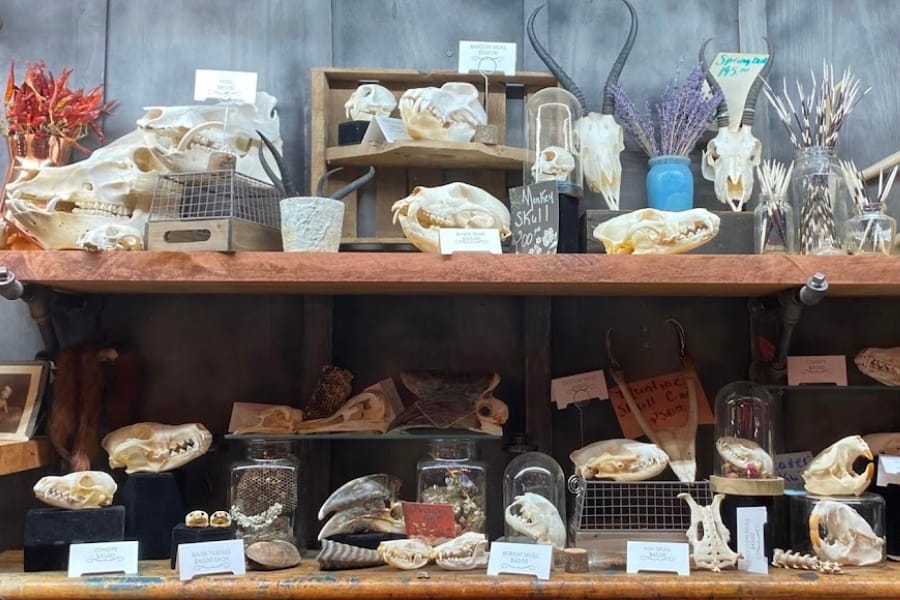
If you don’t have much time and energy to engage in full-blown fossil hunting, you can also pay a visit to our trusted local shops that sell them, such as:
- Earthforged Rock Shop – 429 Shields Rd, Huntsville, AL 35811
- Keepers Korner Rocks & Oddities – 103 Simpson St, Florence, AL 35630
- Shark Tooth Creek – 24114-AL 14 Aliceville, AL 35442

